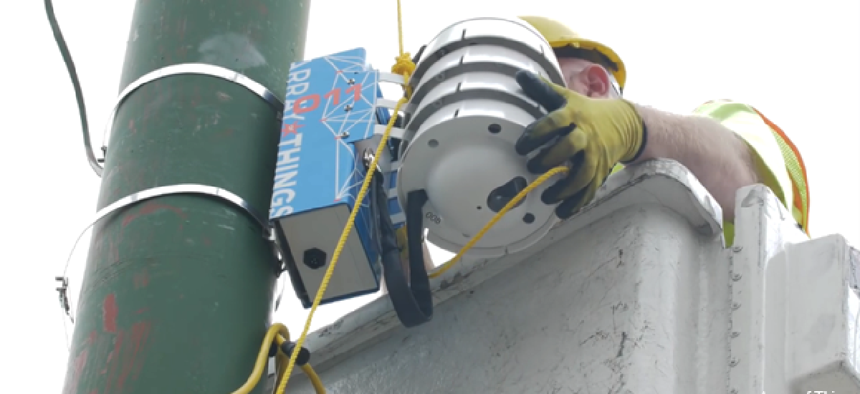Design and resilience key for smart city sensors

The success of Chicago's Array of Things sensor net depends not only on the resilience of the hardware but the look of the nodes, according to the project’s lead.
In the race to get “smart,” more cities are considering installing data-collecting devices across their neighborhoods. According to one sensor net pioneer, however, it’s not as easy as putting a box on a pole and waiting for the data to flow in.
First, there are obvious considerations, said Charlie Catlett, the senior computer scientist at the Department of Energy’s Argonne National Laboratory who has been working with Chicago's Array of Things project. What data will it collect? How will the data be made available? What is the privacy policy? And when a city puts up hundreds of sensors, Catlett told attendees at the March 7 Socrata Connect conference, it must also have to consider the possibility of repairing them.
Chicago plans to have 500 nodes in its Array of Things network. They will be fitted with onboard computing power and machine learning capabilities to provide a variety of data types via open application programming interfaces.
The hardware for the Waggle wireless sensor system used in the Array of Things nodes, for example, needed to be able to last a long time and have an unintimidating presence, Catlett said.
That meant incorporating a supervisor board that included sensors to provide updates on the internal environment of the device. The Waggle node houses three computers that work to keep each other healthy. When 500 devices are mounted atop light poles, he noted, they can’t be going offline or failing.
“Relative to the cost of this box, the labor for a crew of three electricians to go out with their bucket truck and wire things up -- that’s an expensive thing to do,” he said. “And you don’t want to waste their time by sending them out to fix things.”
But researchers still wanted the devices to be easy to remove in case they needed an update or repairs. Catlett said his team worked with the Chicago Department of Transportation to build a simple system that could be easily detached.
“We said, ‘we want you to help us design the mounting and the packaging so that it takes you no more time to replace an Array of Things node than it would take you to replace a holiday decoration,’” Catlett explained. The end result is a system powered by a screw-in AC connector and held in place with stainless steel straps; it takes about 10 minutes to replace, he said.
But the design of the housing also played a role in the public’s perception of the sensors.
“One of the reasons why it's not black and ominous, but is more conspicuous and colorful, is you wanted people in neighborhoods that had this device to think of it as their device that is watching the city on their behalf and giving them data about their neighborhood,” he said.
NEXT STORY: How governments really use emerging tech





